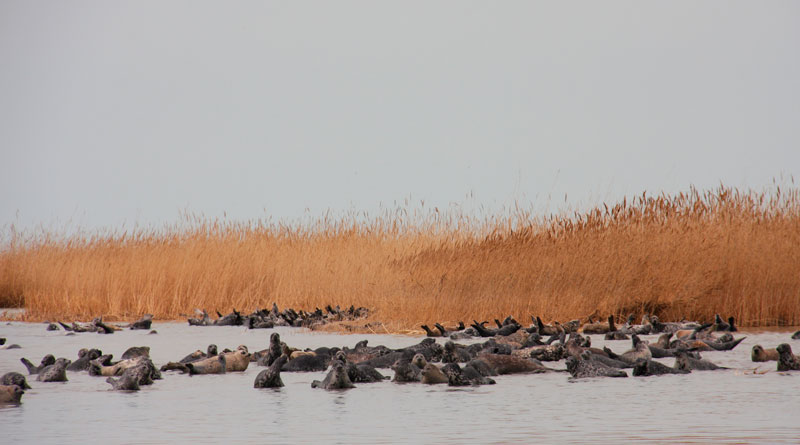Molecular and Serological Assays
© 2023. Aidyn Kydyrmanov (1)*, Kobey Karamendin (1), Yermukhammet Kassymbekov (1), Marat Kumar (1), Shynar Mazkirat (1), Symbat Suleimenova (1), Mirgaliy Baimukanov (2), Ian M Carr (3), Simon J. Goodman (4).*
(1) Laboratory of Viral Ecology, Research and Production Center for Microbiology and Virology, Almaty, Kazakhstan.
(2) Institute of Hydrobiology and Ecology, Almaty, Kazakhstan.
(3) Leeds Institute of Medical Research at St. James’s, St. James’s University Hospital, Leeds, United Kingdom.
(4) School of Biology, Faculty of Biological Sciences, University of Leeds, Leeds, United Kingdom.
* Correspondents: kydyrmanov@yandex.kz (Aidyn Kydyrmanov); s.j.goodman@leeds.ac.uk (Simon J. Goodman).
Exposure of wild Caspian seals (Pusa caspica) to parasites, bacterial and viral pathogens, evaluated via molecular and serological assays
Abstract
Disease surveillance of marine mammal populations is essential to understand the causes of strandings, identify potential threats to animal health, and to support development of conservation strategies. Here we report the first large multi-pathogen screening of prevalence for viruses, bacteria and parasites in a sample of 177 live, healthy, wild Caspian seals (Pusa caspica), captured and released during satellite telemetry studies 2007-2017. Employing molecular and serological assays we assess prevalence of pathogens known to be of significance for marine mammal health worldwide, and evaluate the results in relation to Caspian seal health and conservation. RT-PCR, and PCR assays find evidence for infection by Canine Distemper Virus (CDV), Phocine herpes virus, phocine adenovirus and Influenza A at prevalences of 5%, 6.4%, 21.7%, and 4% respectively. The genomes of CDV isolates collected in 2008 showed 99.59% identity with the 2000 Caspian seal CDV epizootic strain. A partial coding sequence for the Us2 gene from the Caspian seal herpes virus was identical to PhHV-1 isolate PB84, previously reported from a harbor seal (Phoca vitulina), while amplicon sequences for the adenovirus polymerase gene indicated a novel strain. ELISA assays detected exposure to Influenza A (55% of tested samples), adenovirus (25%), coronavirus (6%), CDV (8%), herpes virus (94%), Toxoplasma gondii (2.6%) and heartworm (1%). Hemagglutination inhibition (HI) tests detected exposure to Influenza B at a prevalence of 20%, and Leptospira microscopic agglutination tests detected suspected exposure to Leptospira serovars in 9% of tested samples. Overall, the risks, profile and prevalence of pathogens in Caspian seals appear comparable to other wild phocid seal populations. Our results suggest Caspian seals have exposure pathways to pathogens with epizootic potential or ability to cause significant morbidity, and that disease impacts could reduce the resilience of the population to other conservation threats. Caspian seals are listed as Endangered by the International Union for Conservation of Nature (IUCN), and we recommend that resources are invested to support further surveillance programs and to understand how anthropogenic pressures may influence future disease risks.
To read more on Frontiers in Marine Science.
The text for posting on Kaspika Caspian Seals Conservation Agency web-site was credited by A.I. Kydyrmanov.
The photo was credited by S.J. Goodman.

